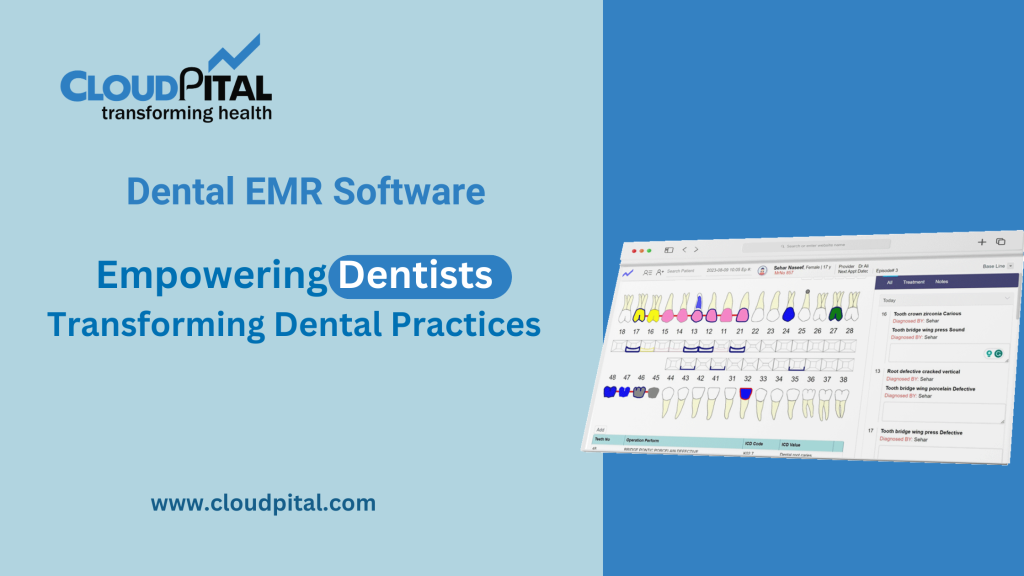Cloudpital # 1 is one of the top EHR System with telehealth services has become a pivotal advancement in modern healthcare, enhancing the delivery of remote medical care. This synergy not only streamlines clinical workflows but also significantly improves patient outcomes. This article delves into the critical role EHR systems play in telehealth, highlighting their benefits and the transformative impact on healthcare delivery.
Click to Start Whatsapp Chatbot with Sales
Mobile: +966547315697
Email: sales@bilytica.com
Cloudpital # 1 EHR System

Seamless Access to Comprehensive Patient Data
EHR System provide healthcare professionals with immediate access to a patient’s complete medical history, including diagnoses, medications, allergies, and laboratory results. This comprehensive data access is crucial during telehealth consultations, enabling clinicians to make informed decisions without the need for physical records. For instance, CloudPital’s EHR system offers integrated telemedicine features, allowing providers to conduct video visits directly from the EHR platform, ensuring that all pertinent patient information is readily available during virtual consultations.
Enhanced Care Coordination and Continuity
EHR systems integrated into telehealth enable effective communication among the healthcare team members, including physicians, nurses, specialists, and pharmacists. The interconnection of these systems ensures that all providers caring for a patient have access to the same information, thereby coordinating treatment plans and reducing the likelihood of redundant or conflicting interventions. Such coordination is important for continuity of care, especially when multiple providers are involved across different locations.
Streamlined Workflow and Efficiency
Telehealth services are made more efficient through EHR systems by automating many things related to administration. For instance, features including appointment scheduling, electronic medical forms, and automated patient reminders lighten the administrative burden on the healthcare staff so that they can focus more on providing patient care. For example, in CloudPital’s telehealth solution, providers can schedule and conduct video visits right from the EHR, send automated emails, and manage patient appointments seamlessly and optimize both patient care and resource utilization.
Improved Patient Engagement and Satisfaction
The integration of EHR systems with telehealth platforms empowers patients to take an active role in their healthcare. Through patient portals, individuals can access their health records, schedule virtual appointments, receive electronic prescriptions, and communicate securely with their healthcare providers. This level of engagement fosters a sense of ownership over one’s health, leading to better adherence to treatment plans and increased patient satisfaction. Moreover, the convenience of accessing care remotely eliminates geographical barriers, making healthcare more accessible to patients in underserved or rural areas.
Enhanced Data Security and Compliance
EHR System are designed with robust security measures to protect patient information during telehealth interactions. Features such as data encryption, secure user authentication, and audit trails ensure that patient data remains confidential and complies with healthcare regulations. CloudPital’s telehealth platform is HIPAA-compliant, ensuring that virtual consultations and data transmissions adhere to strict privacy standards, thereby maintaining patient trust.

Integration of Advanced Technologies
Modern Telehealth are increasingly incorporating advanced technologies such as artificial intelligence (AI) to enhance telehealth services. AI-powered diagnostics can assist clinicians in making more accurate assessments during virtual visits, while features like auto voice-to-text conversion streamline documentation processes. CloudPital’s telehealth solution leverages AI to provide diagnostic support and efficient documentation, thereby improving the quality and efficiency of remote care delivery.
Facilitating Remote Monitoring
This capability is particularly beneficial for managing chronic diseases, as it enables timely interventions and personalized care plans. Patients can use wearable devices or mobile applications to record vital signs, which are then transmitted to the EHR system for continuous monitoring by their healthcare team. This proactive approach leads to better disease management and improved patient outcomes.
Cost-Effectiveness and Resource Optimization
The integration of EHR systems with telehealth services contributes to cost savings for both healthcare providers and patients. For providers, the automation of administrative tasks and the reduction in no-show rates through automated reminders lead to more efficient use of resources. For patients, telehealth eliminates the need for travel, reduces time off work, and minimizes associated expenses, making healthcare more affordable and accessible.
Scalability and Flexibility
EHR-integrated telehealth platforms offer scalability, allowing healthcare organizations to expand their services without significant additional infrastructure investments. This flexibility is crucial in responding to varying patient volumes and adapting to changing healthcare landscapes, such as during public health emergencies. CloudPital’s telehealth solution provides a scalable platform that can accommodate the growing demand for virtual care services, ensuring that healthcare providers can continue to deliver quality care regardless of external challenges.
Data-Driven Insights for Continuous Improvement
The data collected through EHR-integrated telehealth platforms can be analyzed to gain insights into patient populations, treatment efficacy, and operational efficiency. PMS organizations can leverage this information to identify areas for improvement, develop targeted interventions, and implement evidence-based practices. This data-driven approach fosters a culture of continuous improvement, ultimately enhancing the quality of care provided to patients.
Conclusion
In conclusion, the integration of EHR systems with telehealth services plays a crucial role in modernizing healthcare delivery. By providing seamless access to comprehensive patient data, enhancing care coordination, streamlining workflows, and empowering patients, this integration ensures that healthcare services are efficient, effective, and patient-centered. As telehealth continues to evolve, the role of EHR systems will remain central in supporting the delivery of high-quality remote care.


